-
Phone Number
-
Email Address
When analyzing a home energetically, the thermal insulation thickness is one of the the basic questions that will lead us to an improvement of the habitability conditions of the dwelling to be treated, for which it is essential to know all the relevant characteristics relative to the insulation of homes .
Following the publication of a technical report of a new study called CTE Plus , prepared by CENER (National Energy Center Renewables) for ROCKWOOL, which focuses on quantify the potential for energy savings in homes by improving thermal insulation in its enveloping . It proposes to increase the thickness of isolation above those who merely comply with the requirements of the Technical Code, depending on the climatic zone where the building is located.
To carry out the study and identify the potential for the calculation of thermal insulation , used three different models of buildings, two of residential type, and a third of offices. these were simulated in three different climatic zones (Seville-B4, Madrid-D3 and Burgos-E1). average savings potential was calculated by applying a distribution of the population (63% in climatic zone B4, 34% in D3 and 3% remaining in zone E1).
It raises the effect of a possible future scenario, by comparing the scenario of the CTE (Version April 2005) with a scenario called CTE-Plus q
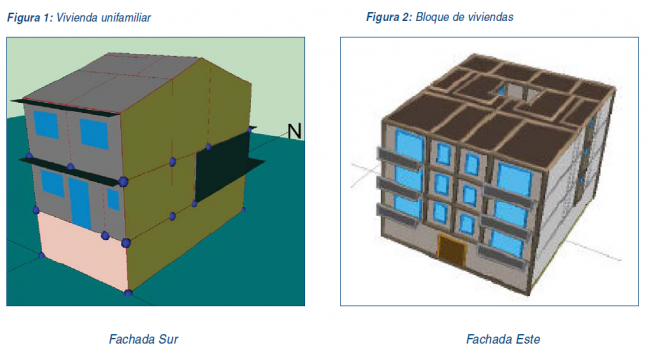
In the parameters used for the study, it is considered the price of energy, the price of insulation, the insulation durability, CO2 price penalty and CO2 conversion values.
Content menu:
In order to obtain the insulation thickness optimum , a calculation model similar to the one used in the ECOFYS report: «Cost-Effective Climate Protection in the EU Building Stock”, through the creation of the economic profit function defined as the difference between income (Total annual costs derived from saving when insulation is increased) and expenses (Annual cost of investment by increasing insulation).
Figure showing the difference between insulation optimal and ideal thermal:

Amortization is considered to be the number of years in which the energy costs saved equal the initial investment done. For this study, a period of amortization of the insulation of 40 years, estimating that it is the time it takes a building to be fully rehabilitated and the moment in which, possibly, it improves or changes the insulation of the envelope despite the fact that it could be in good condition.
The following table shows the thicknesses of insulation used in the “CTE scenario”:
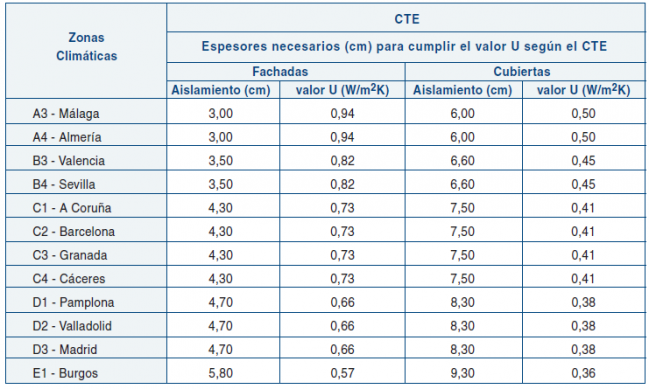
While the following table shows the values corresponding to the “CTE-PLUS” scenario, the thicknesses being insulation used in the simulations for each zone climate.
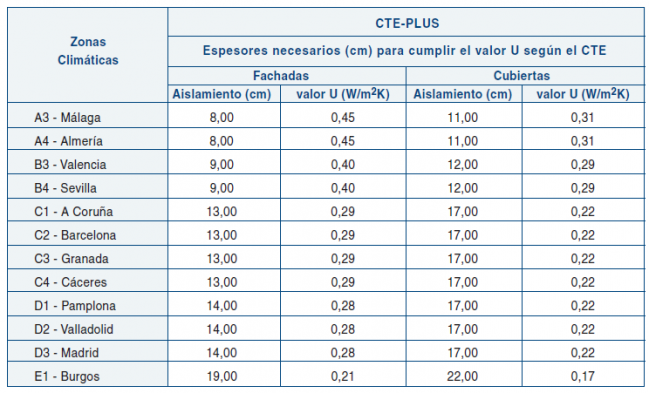
For individual dwellings, the savings in each of the climatic zones corresponds to that indicated in the following table:
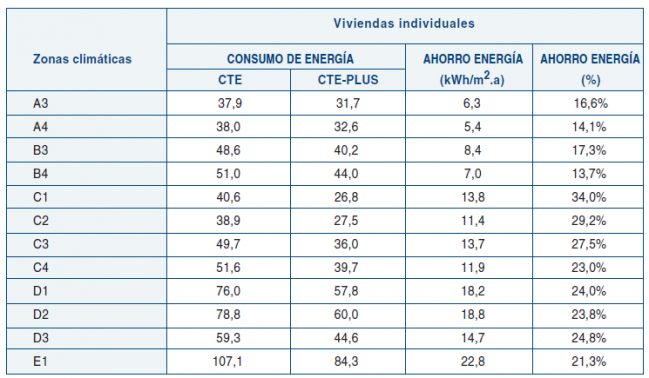
For blocks of flats, the savings in each of the areas corresponds to the one indicated in the following table:
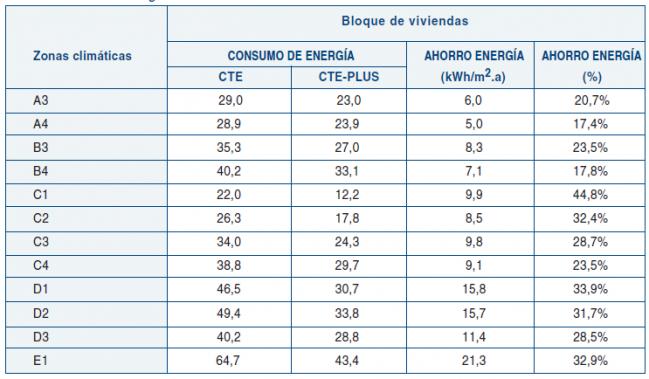
Simulations show that increasing the thickness of the insulation in 5, 9 and 13 cm above what is required in the CTE, and depending on the climate zone, the savings cumulative energy is ~10 TWh (9873 GWh) for the new homes built in Spain in the period 2006 – 2012.
The study has not taken into account the huge market that represents the rehabilitation of the park of existing housing , nor the buildings of the third sector. The study shows that the greatest potential energy savings by increasing thicknesses above those indicated in the CTE. The greatest savings are obtained in the heating periods while in the heating periods refrigeration the savings are minor.
The energy savings obtained per m2 in the detached dwellings are larger than obtained in the apartment blocks. One of the reasons that justify this result is that single-family homes They have a greater exposed area per m2 than the block of flats and, therefore, the influence of changes in the thermal characteristics of the enclosures is very important
You can access all the documentation of the study or CTE Plus report from … HERE .
As a complement you can access the post … « Transmittance tools thermal « With different sheets in Excel to perform calculations.
Note: I add a link of Linkedin before the debate that we believe is of interest general and to complement the present post…. HERE.